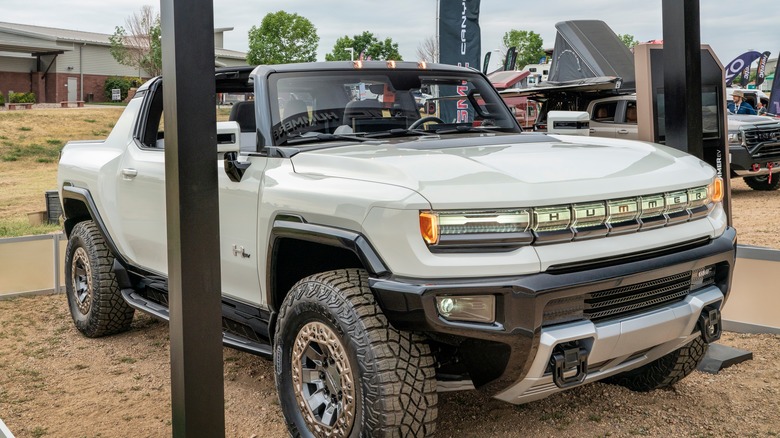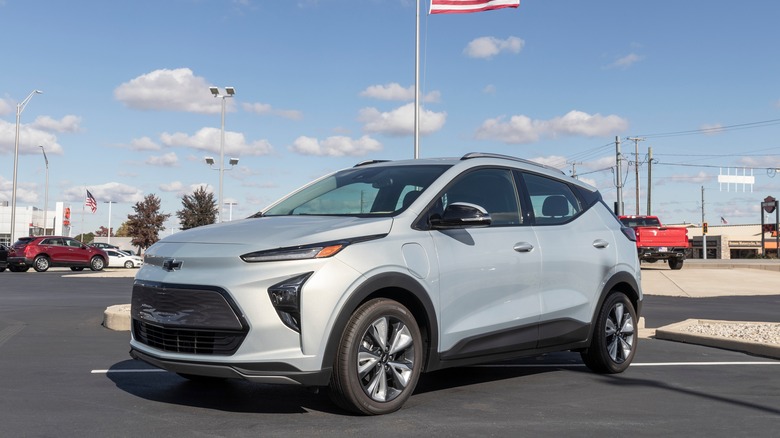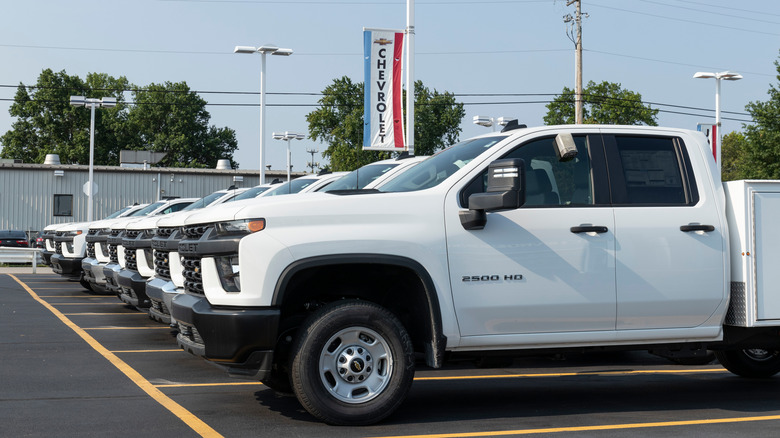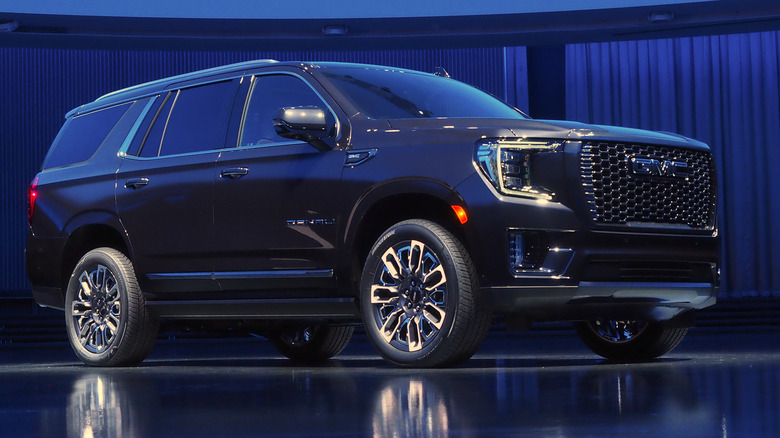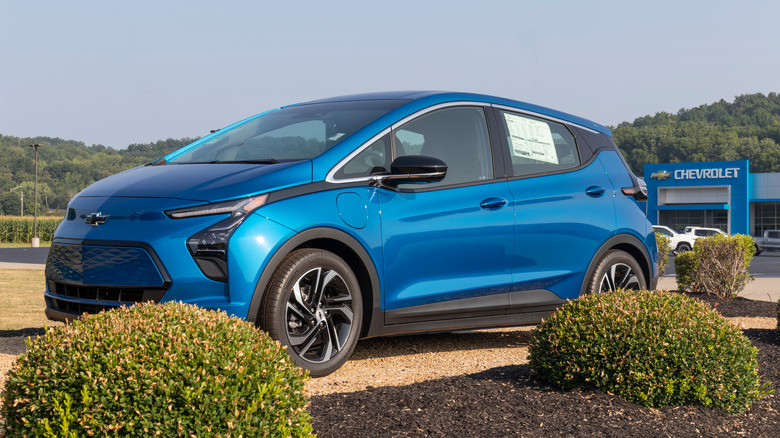GM Built 95,000 Vehicles It Can't Sell
Semiconductor shortages don't just affect the computing industry. While the latest NVIDIA cards or gaming consoles may be more difficult to find while semiconductors are less available, modern vehicles are also highly dependent on built-in computers that regulate everything from onboard GPS to anti-lock braking systems, making them a core element in the design of certain cars.
GM is no exception to the list of car manufacturers that rely on computers in their vehicles, and a quarterly earnings report on July 1 revealed that the number of unsellable vehicles currently in its inventory has reached nearly six figures. This is due to the ongoing semiconductor shortage. While GM is able to construct the chassis of its vehicles with all other necessary mechanical parts included, it's unable to fit them with their automated systems, making them undriveable.
GM sales are still increasing
Back in September 2021, GM was forced to shut down entire North American manufacturing plants due to the semiconductor chip shortage, given that the company would simply be generating more deadweight for their limited inventory space by continuing to manufacture more of these unfinished cars. Some manufacturing plants, such as its Arlington Assembly and Flint Assembly, have continued to produce vehicles despite the semiconductor shortage. Certain other manufacturers, such as Ford and FCA, have been idling since January 2021.
In its earnings report, sales across all GM-owned brands are not expected to slow down any time soon, despite the roughly 95,000 vehicles that can't be sold. GM noted in an SEC filing report from July 1 that these vehicles will be finished in the latter half of 2022, as semiconductors begin to flood back into the market. This could happen sooner, as reports since late April have claimed the shortage is now down to a transport logistics issue rather than a silicon supply issue.
The vehicles most impacted are in biggest demand
While initially General Motors was coy on which vehicles, exactly, it had been forced to temporarily mothball as it waits on missing components, the automaker did get a little more forthcoming later in July. Buried in its Q2 2022 financial results report was some extra color on just where the holdup hit. Unfortunately for GM, the primary impact was on some of the segments that the vehicle-buying market is most interested in right now.
Of the vehicles held in inventory in the second quarter, GM confirmed, roughly 75% were full-size pickups and SUVs. Inventory on dealership lots, meanwhile, amounted to just 10-15 days worth of supply, the automaker said.
Looking forward, General Motors is taking steps to make sure these sort of shortages don't have the same impact in future. "We have binding agreements securing all battery raw material to support our plan for 1 million units of annual EV capacity in North America in 2025," CEO Mary Barra explained, the company having inked deals to make sure it has enough lithium, cobalt, nickel, and other essential battery ingredients to keep to its ambitious electric car roadmap.
More high-end trucks and SUVs are fueling the shortage
While traditionally pickup trucks and — to a lesser extent — SUVs have been fairly straightforward vehicles, leaving the high-tech features to their sedan and luxury segment cousins, in the current automotive environment that's no longer the case. Rising demand for trucks and SUVs among consumers has come in tandem with increasing call for the sort of high-end options that once would've been the sole preserve of only the most expensive models. In fact, buyers in these categories have shown a significant willingness to spend considerably more for the fanciest upgrades, something manufacturers like GM have been quick to capitalize on.
GM's GMC, for example, has seen distinct success with its Denali trim. Though introduced in 1999, it's been in more recent years where demand for the highest luxury trim level has soared. For GMC's Yukon SUV more than 60% of sales in North America are of the Yukon models, prompting the automaker to introduce an even higher-configured — and more expensive — Yukon Denali Ultimate earlier in 2022.
While that helps nudge average selling price (ASP) higher for car-makers, it also means an uptick in how many semiconductors and other components are required to outfit these lavish trucks. Features like Super Cruise, advanced infotainment, and rear seat multimedia packages not only push up the sticker price, but can considerably increase the demand for parts that suppliers simply can't meet. While the Yukon Denali Ultimate was the first of the Yukon range to offer GM's Super Cruise hands-free driver assistance, for example, GMC warned buyers who actually wanted it that they'd need to wait longer to take delivery of their SUVs due to the semiconductor shortage.
Demand for certain cars is still high
GM highlighted in its report that its third quarter could provide a strong boost to its market share, reflective of growing demand for its vehicles. The company cited a 29% year-over-year increase to sales figures across commercial, government, and rental sectors.
The car manufacturer broke its projections down further, claiming that the commercial demand for midsize pickups saw an increase of 65%, while other vehicle groups enjoyed a 12 to 14% boost. Electric vehicles were also mentioned in the report. Over 7,300 electric vehicles were sold in the second quarter of 2022, which included the GMC Hummer EV Pickup, Chevrolet Bolt EV, and BrightDrop Zevo 600 van. However, these sales figures might have looked more hopeful for the future of EV, if the semiconductor chip shortage not been an obstacle. As of June 30, the company reported 247,839 vehicles (or about 152,839 after you subtract the 95,000 unfinished vehicles) were stored in its collective inventory, many of which were already on their way to retailers.
